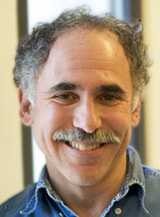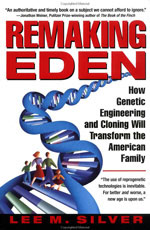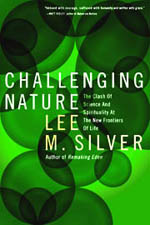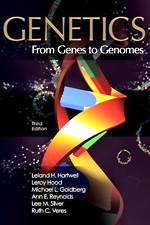|
Biography
Presentations
Publications/Writings
Books
Princeton teaching
|
REMAKING EDEN Last October, just before Halloween, The Sunday Times of London ran one of the best over-the-top horror stories of 1997. The paper reported that a University of Bath biologist had created in a laboratory dish living, wriggling tadpoles -- with no heads! ''Headless frog opens way for human organ factory,'' The Times headline declared. The idea was that platoons of headless human clones could be created to provide a steady supply of fresh, healthy livers, kidneys, hearts and lungs for transplant. (Count on this to be discovered by agents Mulder and Scully on ''The X-Files'' before the season is out.) The story drew a quick reaction from Arthur Caplan, director of the Center for Bioethics at the University of Pennsylvania, and J. Craig Venter, head of the Institute for Genomic Research in Rockville, Md. In a letter to the journal Science, they dismissed the speculation as ''absurd on both scientific and moral grounds.'' First, they said, keeping headless clones alive until adulthood without brains to orchestrate bodily functions ''would be a virtually impossible task.'' On the moral question they had no doubts: cloning headless humans ''would not be an acceptable use of genetic sciences.'' Why? Because it ''would cheapen respect for the human image and form'' and would ''surely be an impermissible act of creating and sacrificing potential humans solely for the benefit of others.'' Caplan and Venter were struggling, along with many other ethicists and scientists, to elaborate an ethics in an area where there is little precedent to guide them. Few of history's great moral philosophers took a stand one way or the other on headless tadpoles. Nor did they consider the ethics of cloning humans, or the issues raised by surrogate motherhood, frozen embryos, sperm donors or the genetic enhancement of human beings. Until a short time ago, who could have imagined such things? In their letter, Caplan and Venter urged that ''ridiculous'' questions concerning headless clones be dismissed so scientists and ethicists can focus on more pressing issues, such as whether DNA testing could threaten privacy, job security or access to health care. Lee M. Silver, the author of ''Remaking Eden: Cloning and Beyond in a Brave New World,'' takes a different view. No question is too speculative, remote or absurd for Silver, a Princeton University biologist and geneticist who teaches bioethics. He entertains even the wildest and most speculative notions because -- as he argues persuasively -- the future is already here. Many genetic and reproductive manipulations that seem to be science fiction are far closer to reality than we recognize. Headless clones are not among the wonders we are likely to see in the next few years, but the question they raise --whether human beings ought to be produced to donate organs -- is extremely relevant, because, as Silver points out, it has already been done. In 1988, Anissa Ayala, a high school sophomore in suburban Los Angeles, was diagnosed with myelogenous leukemia. Her only hope of survival was a bone-marrow transplant, but a two-year nationwide search for a compatible donor was unsuccessful. So Anissa's parents made the decision to have another child, who, they fervently hoped, could become the donor they sought. The odds were against them; there was only a 25-percent chance that the child's bone marrow would be compatible. Anissa's mother, Mary, 42, became pregnant. Amniocentesis showed the fetus was indeed compatible. The child was born in 1990, and the transplant was done 14 months later. It worked. Five years later, Anissa was still cancer-free. For the first time on record, a human being had been deliberately ''produced'' to serve as a donor. That is only one of many brave new scenarios Silver discusses in ''Remaking Eden.'' He raises the possibility that a lesbian couple might have a child that is genetically related to both of them, through a process known as embryo fusion. He talks about ''the Michael Jordan scenario,'' in which a nurse might surreptitiously steal a few drops of blood from Michael Jordan during a routine physical and sell it on the black market to be used in cloning. He explains the mechanics of fetal matches, in which immature eggs and sperm progenitors would be removed from aborted or miscarried fetuses to create children whose parents were never born. And he describes the way parents might sit at a computer and click through a series of genetic menus as they choose the characteristics they want for their children. Midway through the book, as Silver is riffing on these fascinating prospects, a disturbing message becomes clear. Nearly every tale ends with the same punch line: the technology to do this is already in hand. Almost everything needed to accomplish these feats has already been done in mice or other laboratory animals, and Silver reminds us that in the early days of gestation a mouse embryo is nearly indistinguishable from a human one. If that isn't provocative enough, he argues that most ethical debates over genetic enhancement and reproduction will become moot, because parents will demand these new techniques and government will be powerless to intervene. According to Silver, that's where Aldous Huxley got it wrong. In ''Brave New World,'' Huxley describes state-run human hatcheries where embryos are produced according to government specifications. But that's not the way it will happen, Silver says. ''What Huxley failed to understand, or refused to accept, was the driving force behind babymaking. It is individuals and couples who want to reproduce themselves in their own images.'' Indeed, he continues, when the right of parents ''to control every other aspect of their children's lives'' is widely accepted, it is hard to argue against allowing them to shape their children's genetics. For example, it might, in fact, be unethical to deny parents the opportunity to eliminate disease genes in their children. In one of Silver's Princeton classes, 90 percent of the students said they were opposed to the use of genetic engineering on their children for any reason. When asked about a hypothetical gene enhancement that could prevent AIDS infection, half of them changed their minds. But couldn't the government, or the courts, simply pass laws or issue rulings that genetic enhancement or other manipulations are against the law? They can try, says Silver, as they did with surrogate motherhood. When a New Jersey court ruled in the Baby M case in 1988 that surrogacy contracts were illegal and unenforceable, a number of states passed laws saying the same thing, and the era of surrogacy was supposed to be over. But Silver cruises the World Wide Web and finds that ''the American surrogacy industry is booming.'' In those states that allow surrogacy, the trade is brisk. ''What the brief history of surrogacy tells us is that Americans will not be hindered by ethical uncertainty, state-specific injunctions or high costs in their drive to gain access'' to new reproductive technologies. Silver tries to find a reason that we should rage against this, and he comes up mostly empty. He finds dizzying layers of contradiction in most religious and ethical arguments against one or another reproductive or genetic technology. Many of the arguments are based on the notion that there is a ''specialness'' about human reproduction or human embryos or human life. Galileo once argued that the earth was not the center of the universe; Silver argues that human reproduction does not belong at the center of the biological universe. Referring to a technique -- already accomplished with mice -- that could lead to the production of human sperm in, say, the testes of a pig, Silver says: ''The 'specialness of humanity' has been challenged, and it's been found wanting. . . . There is nothing special about human reproduction.'' The thing that most concerns him is the possible effect of all this genetic and reproductive cookery on society at large. There is reason to fear that the gap between rich and poor could grow larger as these expensive technologies are employed only by the well-to-do. Silver even fantasizes about a distant future in which the upper classes have undergone so much genetic tinkering over so many generations that they have become unable to mate with members of other classes. They have, in effect, become a different species. But should genetic enhancement be denied on those grounds? Wealthy parents can already offer their children a $100,000 Ivy League education that is denied to many poorer children. Wealthy parents can afford all sorts of other environmental enhancements, too, such as piano lessons and the best medical care. So why shouldn't they be allowed to enhance their children's genetics? As Silver points out, both contribute to a child's chances of success, though neither is a guarantee. Silver offers one simple suggestion as a guideline for the use of these new technologies. There are ''many paths that can be followed to reach the goal of having a child,'' he writes. And the validity of any of these paths should be judged ''not by their intrinsic nature, but by the love that a parent gives to the child after she or he is born.'' Whether or not we can produce humans without heads, Silver seems to be saying, we ought be sure they have hearts. Paul Raeburn is a senior editor at Business Week and the author of ''Mars: Uncovering the Secrets of the Red Planet,'' which will be published in August. |
Hover over or click on books to order from Amazon.com
|



